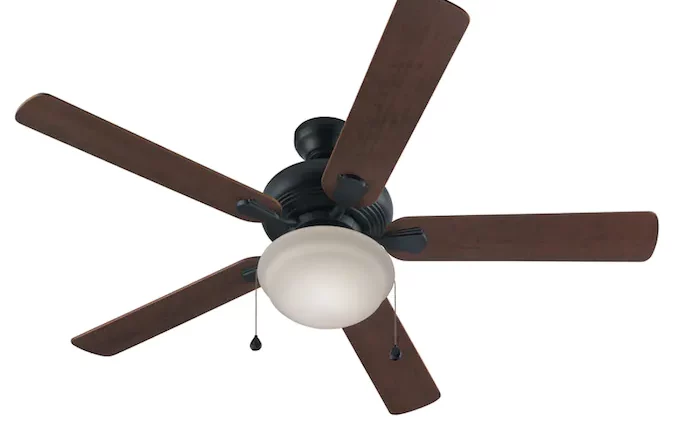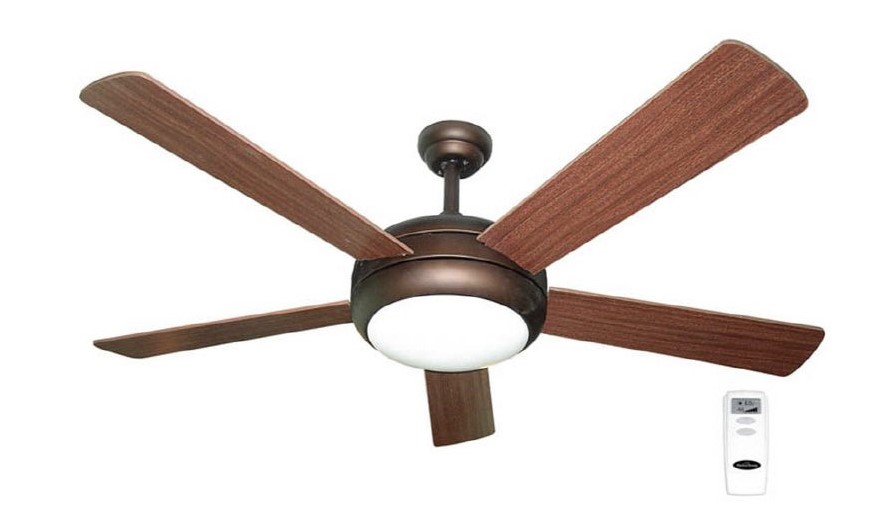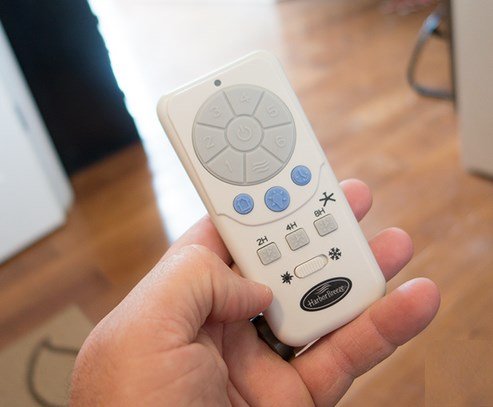


Articles, products, and services offered on this site are for informational purposes only. We are part of the Amazon Services LLC Associates Program, an affiliate advertising program. Amazon.com is compensated for sales resulting from links on our website.
Please review our disclaimer before acting based on anything you read or see.
Harbor Breeze is a famous and trusted brand looking for ceiling fans. Whether you want a quiet ceiling fan in your bedroom or looking for a ceiling fan in your living room, this brand is full of desirable possibilities. Let’ learn how to reverse harbor breeze ceiling fan with remote.

Harbor Breeze is a famous ceiling fan brand. Many Harbor Breeze ceiling fan models come with a remote control programmed to control the unit. Follow these simple programming instructions to change the direction of the Harbor Breeze ceiling fan remote control in five minutes or less.

Configuring remote control activation allows you to switch on the Harbor Breeze ceiling fan from the comfort of your couch by pushing a button. The fanlight and fan speed may both be changed using the remote control.
Self-help with a few tools is required to install the Harbor Breeze ceiling fan remote control receiver in the fan shroud. Inside the fan cover, this receiver is wired. The other receivers have extra steps and are securely fastened to the wall.
The ceiling fan works with an electric motor that contains rotating motor coils. The energy passes through the condenser of the fan motor and creates torque to rotate the fan blades. When you open the ceiling fan cover, you will see the three main wires that connect the motor to the light. The black wire from the ceiling fan supplies the fan motor.
The blue wire powers the device. And the white wire is the neutral wire for the motor and light. These are the wires that will connect to your new remote-control receiver.
When working with electrical installations, it is recommended to test the new conductor with a non-contact voltage tester before handling.
Be sure to turn off the fan power before beginning any electrical project. The power supply must be switched off at the circuit breaker. Before you begin, remove the remote receiver from all packaging and prepare all tools.
Using a ladder, carefully remove the four screws that hold the fan cover in place. Put the screws away in a secure location. Remove the motor cover from the ceiling fan. Inside, you should see the ceiling fan wiring and the hanging bracket attached to the electrical cabinet.
The wire connectors twist together. Find the white wires that connect to the electrical box from the ceiling to the fan. These two white wires will need to be separated. Next are the black and blue wires.
Disconnect both by twisting the wires from the black wire of the electrical box. Do not disconnect the green wire.
Your new remote receiver will have the same black, blue, and white wires as those inside the cover. They will be on the ceiling fan side of the receiver and will have labels showing the motor conductor, the light conductor, and the neutral conductor. On the other side of the receiver will be a black wire and a white wire that will connect to the corresponding colors on the electrical box.
The wires from the receiver must be connected to the wires from the electrical box. Connect all the wire colors and twist one wire connector for each pair, black wire from the electrical box with marked AC / IN on the receiver. Connect the black and white wires from the receiver to the corresponding wires in the electrical box. After connecting all the wires, you can insert the receiver behind the hanging fan bracket.
The cover now covers both the electrical box and the receiver. Tighten the canopy bolts firmly and carefully lower the ladder. Test the fan by turning on the circuit breaker. If the fan operates normally, try the remote control. If necessary, be sure to insert the batteries into the remote control.

If the remote control has frequency problems, you can perform remote Harbor Breeze programming to enable synchronization and allow effective communication with the fan receiver, even if it does not have a reset button.
Here are the simple steps you need to take to program the Harbor Breeze remote control:
If the ceiling fan has a set of lights, also synchronize them by pressing the on/off button.
If your Harbor Breeze ceiling fan is working but can’t be turned on because it accidentally turns itself off, here are some possible reasons:
To control the remote ceiling fan without using the remote control, add a tow cord to the switch on the engine module. The cable tie can be purchased at a hardware store or garden and patio shop, and the necessary tools are already available in most households.
Using this button will automatically turn off the light 1 minute after pressing the button. Press “once, the ceiling fan light will flash to confirm that the light delay is active, the light and fan will turn off after 1 minute.
If your Harbor Breeze ceiling fan remote control does not work, the most common problem is that the overvoltage could clear the controller memory or the controller batteries need to be replaced. You will need to replace the remote-control battery and resynchronize it with the receiver to solve these problems.
A slightly loose wire in the circuit is enough to turn off the light. The movement is enough to loosen or even disconnect the already loose wire when the fan spins. If the connection point is clogged, rusted, or short-circuited, the ceiling fan light may go out from time to time.
The ceiling fan direction switch or knob sets the direction of rotation of the ceiling fan – clockwise or counterclockwise. Almost all modern ceiling fans can be set to rotate in any direction you choose.
When the remote control is added to the ceiling fan with light, then the light control is also via the remote control. This means that switching the light on and off (and dimming, if available) is done using the remote control and not the wall switch.
The Harbor Breeze ceiling fan is an important device in every home to help you successfully overcome various weather conditions. With this useful Harbor Breeze ceiling fan troubleshooting guide, you can now solve any problems you may have. The problems listed here can be fixed quickly and easily. Your fan will lock in place and start spinning, and you will soon enjoy the breeze. Hope you have learned how to reverse harbor breeze ceiling fan with remote.

Bridget Erlikh is a proficient content writer who stands at the forefront of the ever-evolving world of electronics. With her expert knowledge, she crafts articles that delve into the intricacies of the latest gadgets, explaining their features in an accessible and engaging manner. Bridget's work bridges technology and its users, demystifying complex topics while keeping readers informed about the latest trends and developments. Renowned for her insightful reviews and tech guides, Bridget continues to be a beacon for anyone navigating the dynamic landscape of electronics.